
Pamper your body without spending a fortune thanks to these natural skin care ingredients found right in your kitchen.
Read on to discover how you can indulge in DIY spa sessions using foods and oils filled with nutrients and minerals that help support healthy skin, hair, and nails. By nourishing your body with real foods, you can save money and avoid harsh chemicals found in commercial body care products.
1. Magnesium Oil
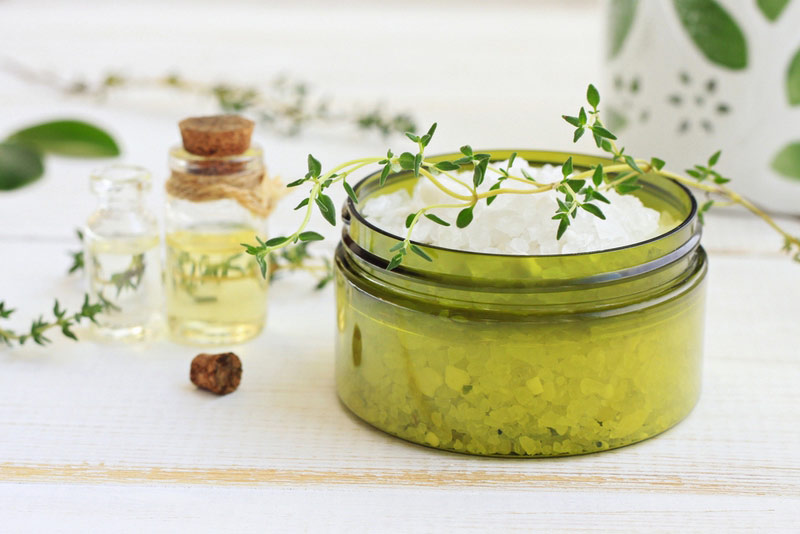
Magnesium is one of the most abundant minerals in our bodies, where it is responsible for over 300 enzyme reactions. It helps regulate blood pressure, improve sleep, and boost immunity, to name just a few benefits. (1, 2, 3)
Unfortunately, due to the depletion of our soils from over-farming, many foods don’t contain as much magnesium as they used to. This makes it easy to become deficient in this important nutrient, especially if you aren’t eating a variety of plants and magnesium-rich foods.
This is where magnesium oil comes in. Applying magnesium in the form of a topical oil can help restore magnesium levels faster than consuming it orally, so your body can experience its zen-promoting benefits sooner rather than later. (4)
How to Use Magnesium Oil
Magnesium oil sprays and lotions are the best way to apply magnesium topically. Indulge yourself following a shower or hot bath by rubbing the oil into your skin. It might tingle at first, but the sensation quickly fades.
2. Epsom Salt
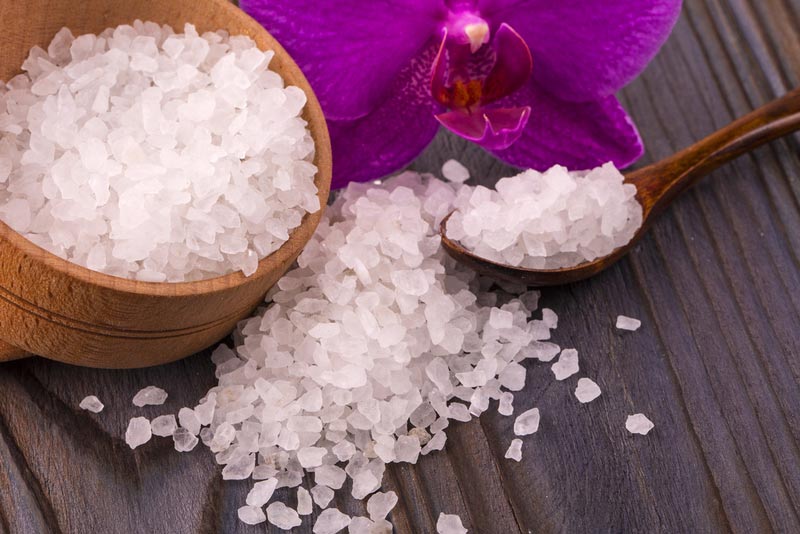
Drawing a bath with Epsom salt is another great way to increase your magnesium levels in order to ease stress, reduce anxiety, and give your nervous system a rest. (5) As a bonus, studies also show that soaking in magnesium-rich baths improves skin hydration, skin roughness, and skin redness. (6)
How to Pamper Your Body with Epsom Salt
Draw a hot bath a few times a week (or even every day if you want!). Add 2 cups of Epsom salt and swish them around until they’re dissolved. Soak for at least 15 minutes to enjoy the calming benefits.
3. Avocados
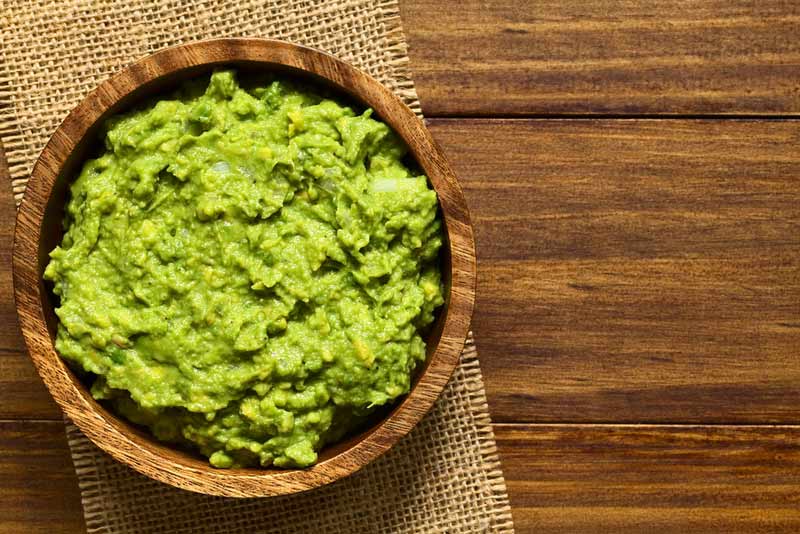
Not only do the healthy fats and nutrients in avocado help nourish your body from the inside, they can also lend your skin some serious moisture. Avocados are rich in vitamin E, a powerful antioxidant that helps reduce signs of aging, protects skin from sun damage, and helps keep skin supple by boosting collagen. (7)
How to Use Avocado
Mash up some avocado into a guacamole-like consistency (yes, you can eat some) and slather on your face for a quick, no-fuss face mask. Leave the mask on for 10 to 15 minutes.
If you want to add a few more natural skin care benefits to your mask, combine with a tablespoon of raw honey and a teaspoon of turmeric powder. Let sit for 15 minutes, then rinse off.
4. Activated Charcoal
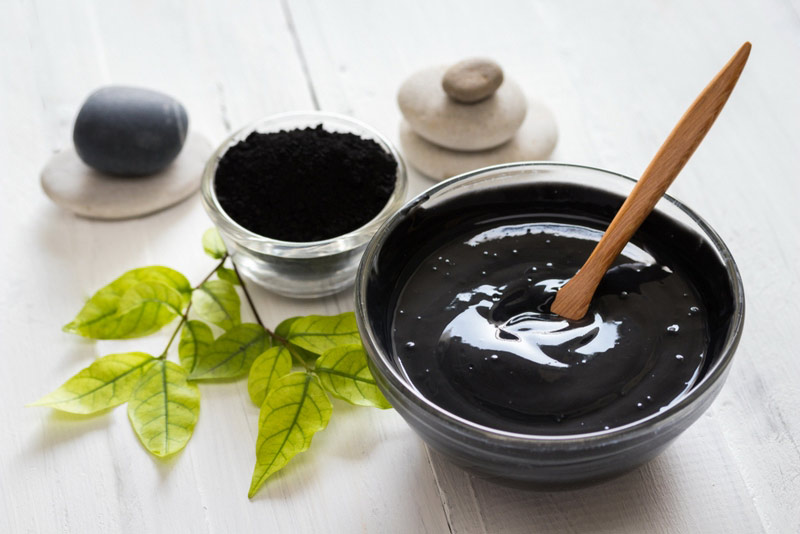
Activated charcoal is a pure form of charcoal that has the ability to absorb toxins and impurities, both from inside your body and on your skin. (8) Note: it’s not your barbecue charcoal. Like clay, activated charcoal can help pull out dirt and oil that’s stuck in your pores, causing irritation.
Activated charcoal can also help remove stains from your teeth, effectively acting as a natural teeth whitener.
How to Use Activated Charcoal
- As a face mask to clear pores: Mix 1 teaspoon of activated charcoal powder with 1/2 teaspoon raw honey and 1/2 teaspoon water. Apply to you face, avoiding your delicate eye area, and let dry for 10 minutes. Wash off with warm water.
- As a teeth whitening paste: Wet your toothbrush, place 1/2 teaspoon of activated charcoal powder on it, and brush your teeth. Let the paste sit for 5 to 10 minutes, then wash out your mouth.
5. Apple Cider Vinegar
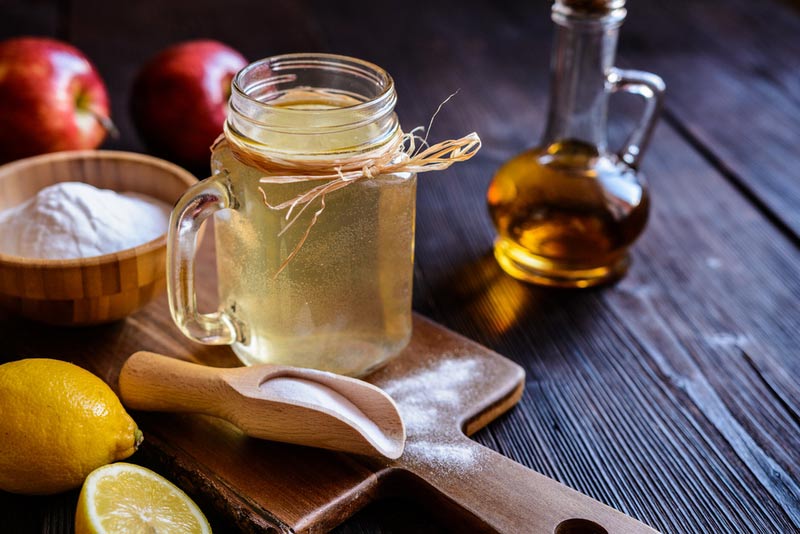
Apple cider vinegar has been used for centuries to treat a variety of ailments, from digestive issues to acne. It is naturally antibacterial while also containing beneficial enzymes and acids that nourish skin and reduce acne-causing bacteria. (9)
How to Use Apple Cider Vinegar
- Dilute apple cider vinegar in water and use as a natural face toner and acne treatment.
- Pour diluted apple cider vinegar on your scalp after shampooing as a natural conditioning and dandruff treatment.
- Soak your feet in diluted apple cider vinegar to soften calluses.
- Add apple cider vinegar to a bath to soften and nourish skin.
6. Coconut Oil
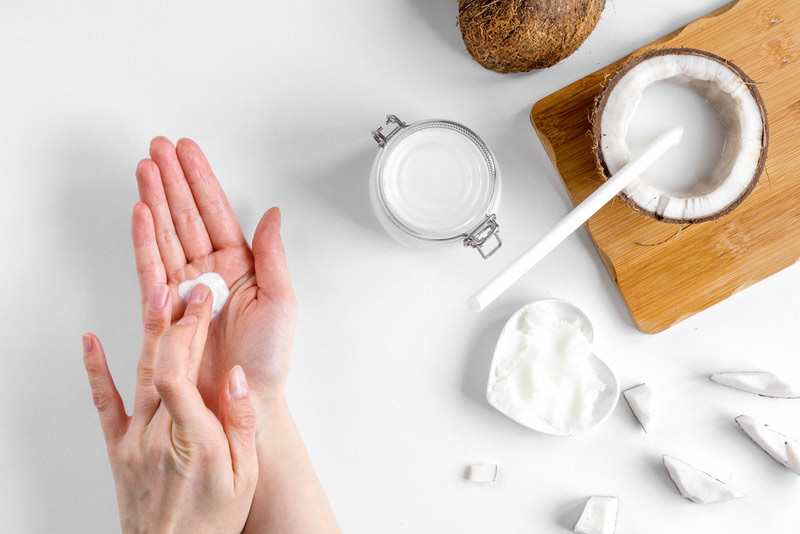
Coconut oil is a potent antibacterial and antifungal. This powerful oil contains healthy, medium-chain fatty acids that moisturize and protect skin and hair. (10, 11)
How to Use Coconut Oil
- Use coconut oil as a full-body moisturizer after you shower. To add a calming aroma, add a drop of sweet orange essential oil or peppermint oil.
- Alternatively, you can use coconut oil as a face moisturizer to help fight wrinkles and acne. The healthy fats in coconut oil lock in moisture in your skin, while the antibacterial properties combat acne.
7. Vitamin E Oil
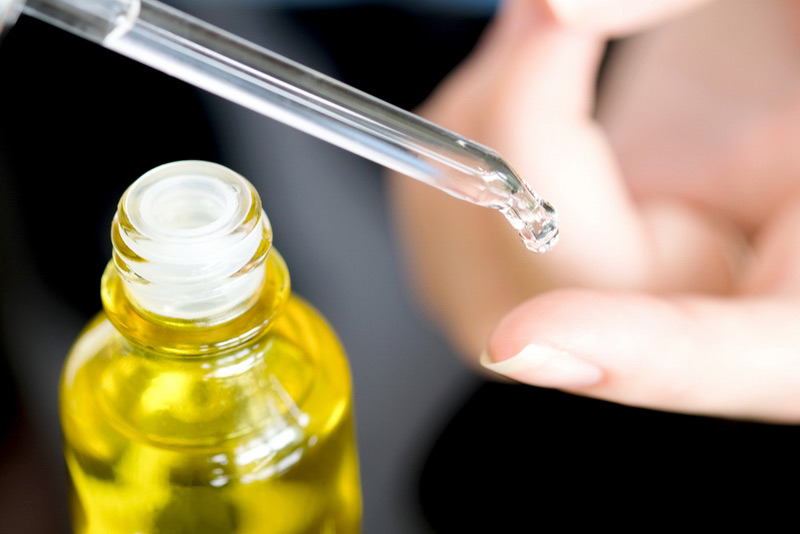
Vitamin E is a potent antioxidant vitamin that fights free radical damage. (12) Free radicals are unstable molecules that damage our DNA, resulting in signs of aging and disease. On any given day, we are exposed to and generate a great deal of free radicals from unhealthy diets, environmental pollution, and even stress. Consuming vitamin E-rich foods and applying the oil topically can help reduce and prevent damage.
How to Use Vitamin E Oil
To nourish your skin, apply vitamin E oil directly, or add several drops to your face and body moisturizer (or add it to coconut oil as a DIY moisturizer).
8. Shea Butter
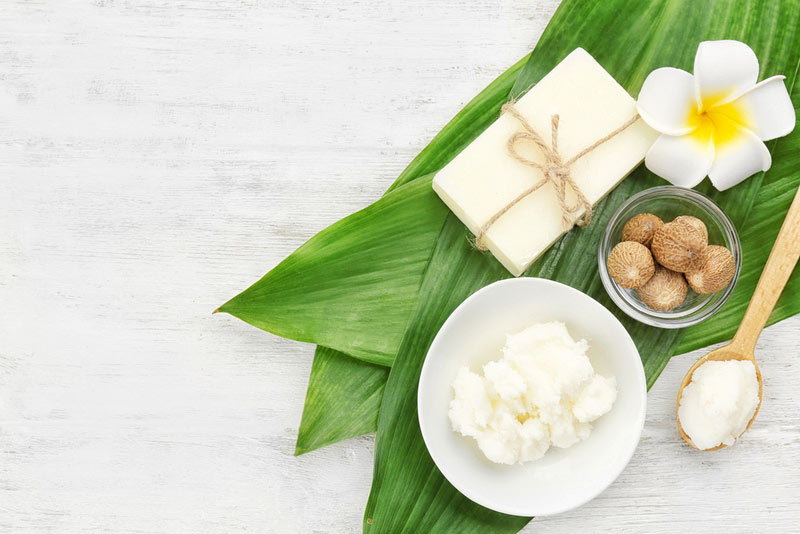
Shea butter is the creamy fat extracted from the African Shea tree, which is considered sacred by many communities in West Africa. Studies have shown it is excellent at moisturizing skin, and also contains powerful anti-aging and anti-inflammatory properties. (13)
How to Use Shea Butter
Shea butter has a rich, creamy texture that makes it perfect for use as a full-body lotion, or even as a heavy face moisturizer. To make your Shea butter experience even more indulgent, add a couple drops of your favorite essential oils and combine them thoroughly before applying.
As a bonus, Shea butter is also said to be excellent for improving the look of stretch marks.
9. Coffee
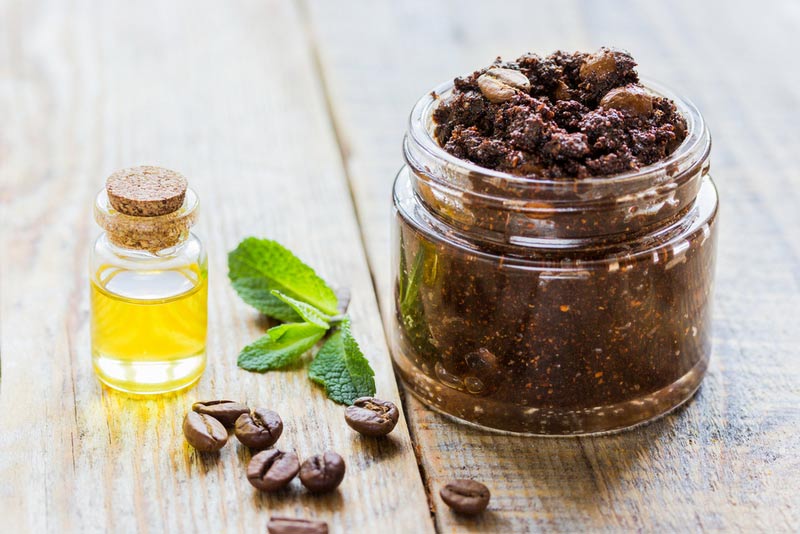
We all know that coffee gives us a kick-start to our day, but it also contains a ton of antioxidants that help fight signs of aging. Coffee’s caffeine content may even help improve cellulite when applied topically. (14)
How to Use Coffee
Using coffee as a full-body scrub can help remove dead skin cells while also increasing circulation and improving the appearance of cellulite. To whip up an easy scrub, combine:
- 1/2 cup coffee grounds
- 1/4 cup coconut oil
- 1-2 drops of your favorite essential oil
10. Raw Honey
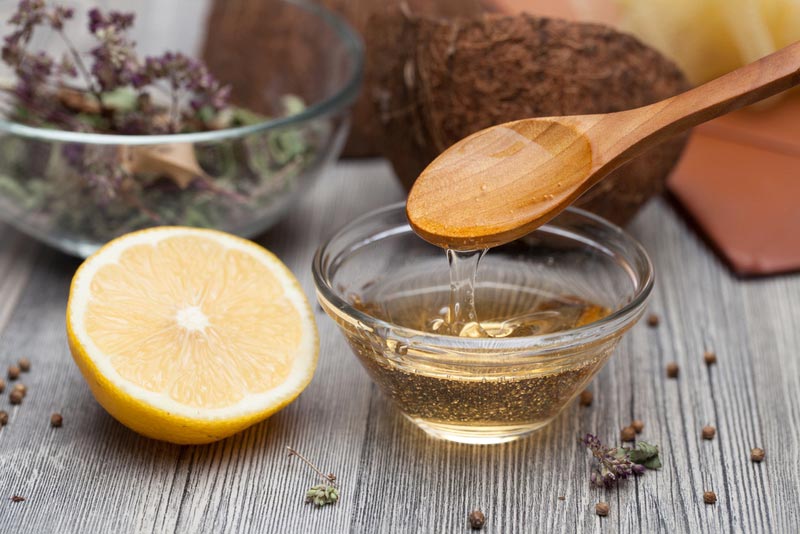
Raw honey just got sweeter: You can not only grab a spoonful for its antibacterial benefits, but you can also apply it topically to help reduce acne, inflammation, brighten skin, and lock in moisture. (15) Honey is a humectant, which means it attracts and holds moisture, which is great for keeping skin supple.
How to Use Raw Honey
For a brightening and moisturizing face mask, combine one tablespoon of raw honey with one drop of lemon essential oil. Apply to your face and let sit for 15 minutes, then wash away with warm water.
11. Sea Salt
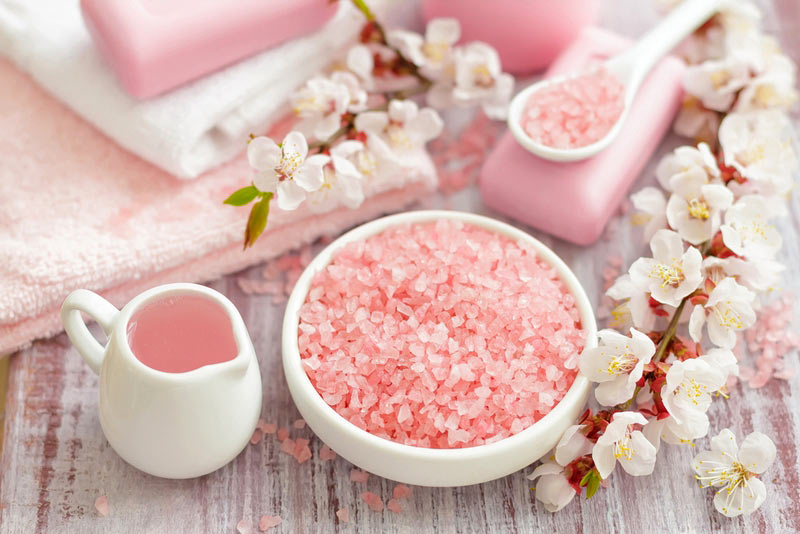
Sea salt is rich in an array of trace minerals, including potassium, magnesium, calcium, manganese, and zinc. It’s naturally antibacterial, which helps manage acne and other skin conditions caused by bacteria. (16) Its coarseness also makes it great for use as a full-body scrub.
How to Use Sea Salt
- Make a soothing salt scrub by combining 1/4 cup sea salt, 1/4 cup aloe vera gel, 1/4 cup coconut oil, and 2-3 drops of your favorite essential oil. This should form a thick paste you can rub over your body in the shower.
- Add 1/2 cup of sea salt to your Epsom salt bath for an extra dose of minerals and skin-softening benefits.
12. Lemon
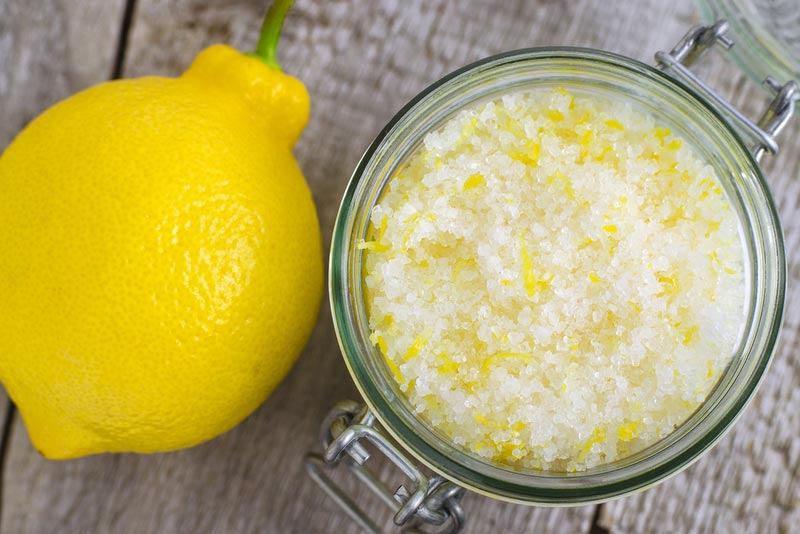
Lemons are rich in vitamin C, another potent antioxidant that fights aging and DNA damage. (17) When applying lemon topically, make sure to avoid the sun as citrus can make your skin sensitive to light.
How to Use Lemon
- Add 1 teaspoon of fresh lemon juice to one tablespoon of raw honey. Apply to your face and let sit for 15 minutes before washing away with warm water.
- Take a section of lemon and rub it on your nails to help whiten them.
- Add one tablespoon of fresh lemon juice or 2 drops of lemon essential oil to one of the body scrub recipes mentioned above.
13. Coconut Cream
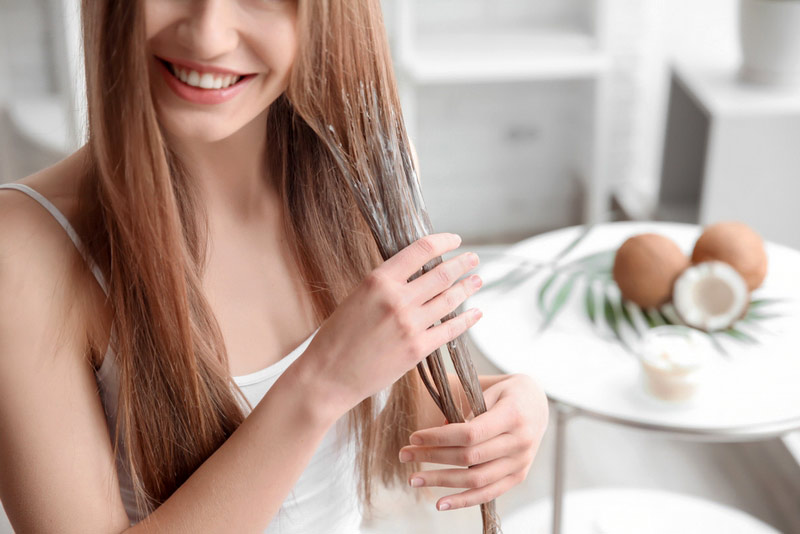
Coconut cream makes a luxurious hair and body moisturizer. Note: Coconut cream is different from coconut oil. Where coconut oil is pressed from coconut flesh, coconut cream results from simmering coconut flesh in water. The thick, creamy layer that separates from the thinner layer is coconut cream (the rest is coconut milk). Coconut cream contains beneficial saturated fats and acids that moisturize, as well as kill bad bacteria. (18)
How to Use Coconut Cream
Nourish you hair by combining 1/2 cup coconut cream with 2 tsp raw honey and 1/4 cup coconut milk. Apply liberally to ends of damp hair. Let sit for 10 minutes, then rinse.

(You’ll Also Love: 13 DIY Essential Oil Products Every Home Needs)
